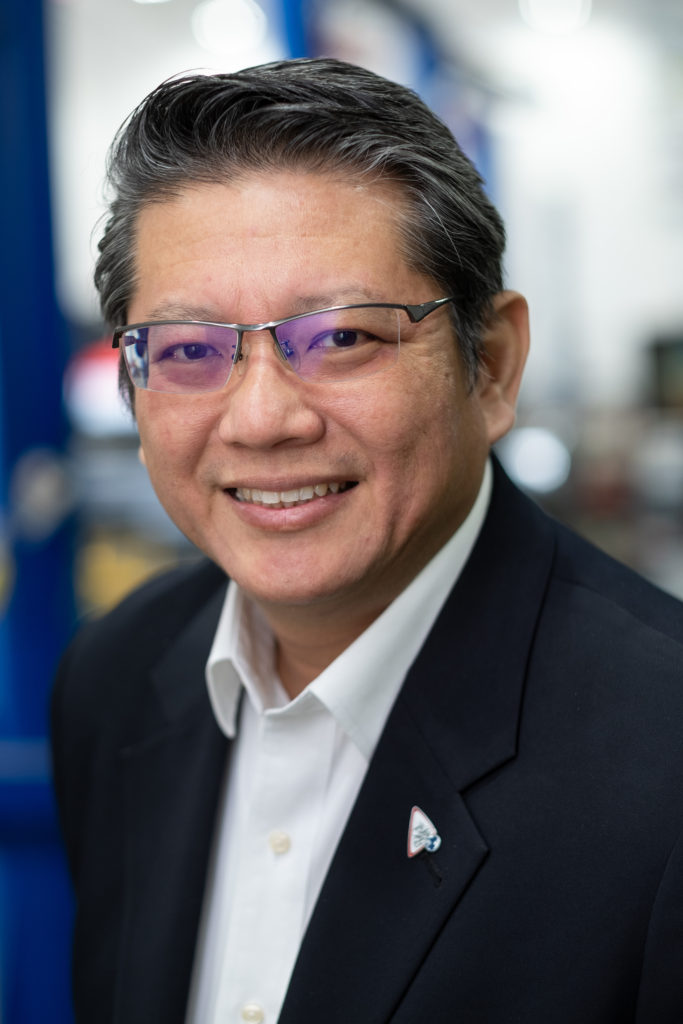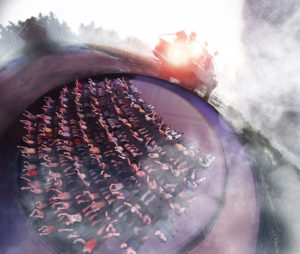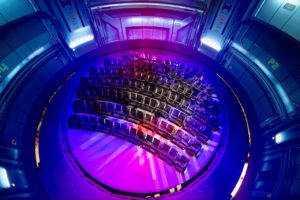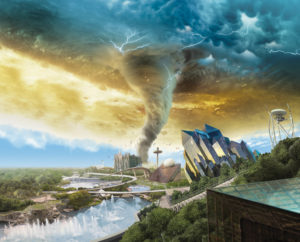By Richard Bilbao | Orlando Business Journal
Temperature checks, permanent hand sanitizer stations and constant wipe-downs after each ride will be some of many new protocols the attractions industry likely adopts after the threat of the coronavirus subsides.
But that’s just the start of new changes the industry will consider after reopening, said industry experts. In fact, there may even need to be changes made during early design of theme park rides that take into account social distancing and minimizing touchable surfaces.
The most the industry has shared on future protocols so far came from The Walt Disney Co., the largest theme park operator in the world. Disney Executive Chairman Bob Iger said, via a Barron’s article, that the theme park operator may check for fevers — one of the virus’ main symptoms. ‘Just as we now do bag checks for everybody that goes into our parks, it could be that at some point we add a component of that that takes people’s temperatures, as a for-instance.”
That said, industry experts also think the virus will result in the reworking of
the attraction-making process. That’s because safety is the No. 1 rule for any entertainment operator from Disney to the small mom-and-pop attraction, so having that goal in mind from the start is critical.
Brave new world
Theme parks are built to accommodate large crowds at all times whether in ride queues, outdoor auditoriums, retail shop layouts and even the parking lots. It’s a simple equation: More people means more revenue.
So when it comes to the attractions industry, capacity is king. But what does that mean for a world that prefers to stand 6-feet apart and not shoulder-to-shoulder in a line?
Balancing the importance of social distancing and maximizing attraction
efficiency are at the forefront of many ride designer minds, said Kelven Tan, vice president of business development for Asia with Dynamic Attractions, a theme park ride designer with offices in Orlando.
“After this initial shakedown, we will think of a redesign of space and
operations. What goes into [a ride] because the number of people you can
push through per hour affects your return on investment,” Tan told Orlando Business Journal.
In the ride industry, the number of guests who can experience a ride in a
limited time — generally an hour — is called the “theoretical hourly ride
capacity.” That formula allows designers to maximize the throughput of
riders experiencing an attraction, which also affects other aspects such as
wait times and queue layout.
“We may not be able to put 20 people in a car sitting tightly with a lap bar
anymore,” Tan added. “We will have to replan our parameters. Maybe we
can’t hit 2,000 people an hour because we have to have an empty seat now. Or do workers spray and sanitize after each load — is that it? So if we go on 10 rides, do we get sprayed 10 times?”
In short: The specifics of how the ride design industry adapts is still very
fluid.
However, it’s possible the answer to future design already exists in a technology theme parks have been using to make waiting for rides more appealing.
Going virtual
One of the possible solutions could lie with the virtual queueing technology we’ve seen in the attractions industry.
Rides like Walt Disney World’s Star Wars: Rise of the Resistance have allowed guests to use Disney’s app to reserve a spot in a digital line. That allows the guest to enjoy the rest of the park and return for their ride when notified by the app.
It’s not a flawless system, as it can have its own hiccups, but it has allowed
guests to spend more time in the park than in a line. And that could help
theme parks encourage social distancing as opposed to having crowds
crammed only inches apart in a queue.
Virtual queueing comes to mind when trying to predict a world where part of ride design is to maximize space between guests, Tan said. As in-park ride apps improve in efficiency and usage, that could help push virtual queueing to being more widely adopted.
In fact, it may be part of the future evolution of theme park design, Dennis
Speigel, founder and CEO with International Theme Park Services Inc., a
Cincinnati-based theme park consulting firm, previously told Orlando
Business Journal.
“Our industry will go through a huge metamorphosis as it relates to guest
safety, comfort and hygiene. They will look at things they can implement
quicker, easier and less costly — virtual queues, for example. It may have to
happen that way,” he said.
That may allow ride designers to be more creative in how they plan the
layouts of attractions. For example, ride queues may be designed more as
playground areas where families can sit at a comfortable distance, but kids
can still be entertained while they await the ride.
Theme park operators like Walt Disney World and Universal Orlando Resort
already have systems like this at attractions like Dumbo the Flying Elephant and Race Through New York Starring Jimmy Fallon, respectively. Both attractions give guests a form of pager or group indicator that they can keep with them as they explore an open area waiting to be called for their ride.
“We are going have to relook at how we design attractions — both indoor and outdoor — from the line to car loading, the internal seating and the distribution of the guests,” Speigel added.
Lingering questions
The theme park industry can come up with all sorts of ways to try and keep
parks clean, but it’s all moot without a more permanent plan to eradicate the threat of COVID-19.
Trying to check temperatures at the gates will introduce far too many false
positives or negatives. That’s because variables such as the environment
could be at play, as well as the fact that many infected people show no
symptoms.
For example, Florida’s hot sun may raise the temperature of a healthy guest to the point where a thermometer reads it as a fever, resulting in a park denying that person access out of precaution. On the other hand, someone who unknowingly has the virus may not set off the temperature checks because they are asymptomatic and have no fever.
“If temperature checks become the holy grail, then no problem. But where
do we put that barometer on a hot day? What is the global standard,” Tan
said.
False negatives introduce the risk of guests who are carriers of the virus
being allowed into the park, feeling safe enough to act as they did before the virus impacted the globe, touching everything they can — and unknowingly spreading the virus.
That’s especially the case with character experiences where guests interact
with costumed workers that have been meeting other people all day. Let’s be honest: It’s not uncommon to see kids and adults alike hug their favorite characters for a photo.
“Are there meet-n-greets anymore?” Tan asked, noting it’s odd to consider a scenario where characters are sprayed down after each interaction.
Another approach could be using rapid testing kits at the gates, but the
availability of kits for the virus are still limited and the wait for results varies greatly — so that’s no guarantee, Tan added.
For example, some virus tests in early distribution can provide a positive
reading in as little as five minutes and a negative result within 13 minutes.
But that’s not fast enough for a theme park. considering Central Florida’s theme parks may welcome an average of 36,000 people per day. Testing each person for the virus before they enter the park with at least a five-minute wait for positive results- creates a logistical nightmare and an insurmountable bottleneck of traffic.
But finding a solution is the looming reality as the industry navigates a post-pandemic world, Tan said, noting that safety must remain the top priority for attraction designers and operators.
And whatever the new guidelines are, guests will have to get used to them because they’re likely permanent, Speigel added.
“The new normal will be temperatures [taken at gates] for certain situations, sanitizing, cleaning protocols and even fumigating. It’s going to be very stringent initially, and we will find it more difficult than people found the Transportation Security Administration,” he said.




